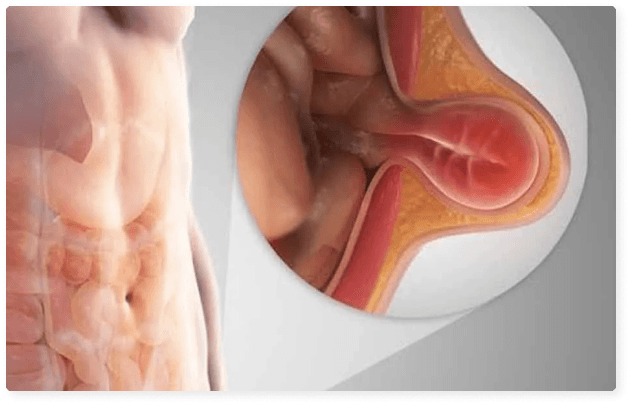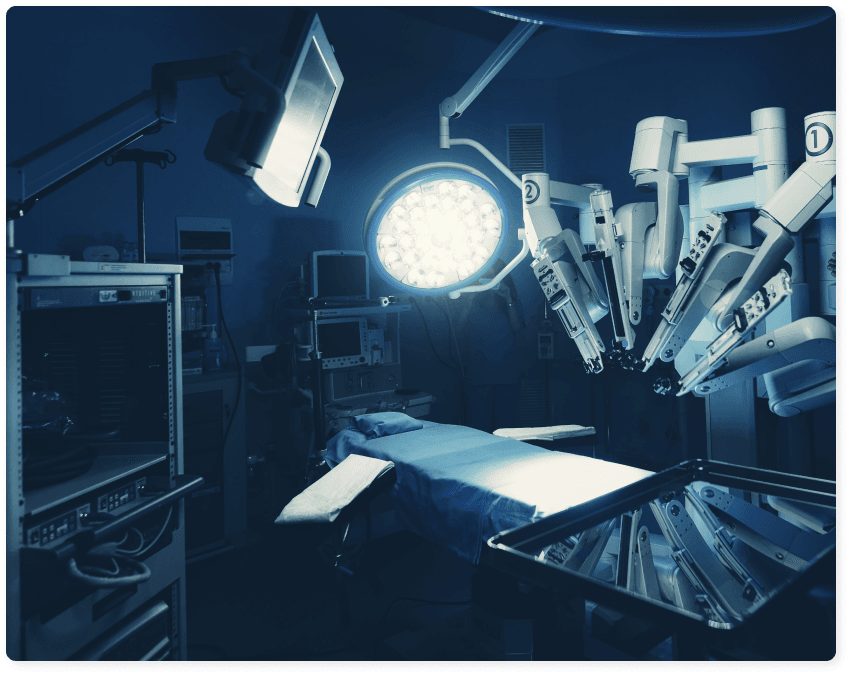Appendicitis
Acute appendicitis is an emergency surgical condition. The experience and specialization of the surgeon in its treatment is catalytic, as appendicitis is a condition that if not diagnosed in time and not treated accordingly, it can have serious to fatal complications.
However, advances in surgical science and technology today make it possible to treat acute appendicitis safely and painlessly: with laparoscopic removal of the appendix.
In the hands of a surgeon with experience and skill, the laparoscopic removal of the appendix becomes a routine operation with excellent medical and cosmetic outcome.

What is the appendix?
The appendix is part of the large intestine and is an embryonic remnant.
At a young age it is rich in lymphatic tissue, which helps defend the body regulate the microbial flora of the intestine.
It has the shape of a small tube about 8 to 12 cm long, which looks like a worm.
The appendix does not have an exact location but is usually located in the right lower quadrant of the abdomen.

What is acute Appendicitis?
Acute appendicitis is an inflammation of the vermiform appendix, which is usually treated surgically.
Why choose Dr. Konstantinidis?
Dr. K. M. Konstantinidis and his team possess vast experience in the field of laparoscopic and robotic surgery.
Dr. Konstantinidis is the pioneer of Robotic Surgery in Greece and one of the leading figures internationally in the field, having performed the largest series of General Surgery operations in Europe with the innovative Da Vinci® robotic system, including inguinal hernia surgeries.
What are the symptoms of acute Appendicitis?
In the beginning, acute appendicitis manifests itself with mild pain in the stomach area and gastrointestinal disorders (vomiting or diarrhea). Later, the pain shifts lower to the right and becomes persistent and excruciating. In addition, there is fever.
What are the causes of acute Appendicitis?
Acute appendicitis is caused by obstruction of a part of the appendix. This may be due to some mechanical reasons (such as obstruction from feces and solid food debris) or inflammation (such as viral infections, enterocolitis, etc.).
What are the complications of acute Appendicitis?
The obstruction of the appendix can cause swelling or even rupture of its wall, resulting in the excretion of its contents (feces) in the abdomen and consequently peritonitis.
When this happens, the patient must undergo immediate surgery to remove the appendix.
How common is acute Appendicitis?
About one in 20 people is estimated to develop acute appendicitis.
Acute appendicitis is the most well-known and common condition that requires surgery in adolescence and generally at a young age.
According to available statistics, the disease has a high incidence in the ages of 5 to 40 years.
How is acute Appendicitis diagnosed?
Early and valid diagnosis of acute appendicitis is a challenge and requires knowledge and experience.
The diagnosis requires a combination of findings from a thorough clinical examination and laboratory / imaging tests.
During the examination, the doctor takes a detailed history of the patient and records his symptoms by measuring temperature, blood pressure, pulse and oxygen saturation in the blood. The examination also includes palpation of the abdomen to identify the patient’s sore spots, as well as finger examination of the rectum.
Laboratory / imaging tests that may be needed include:
- Blood / urine tests
- Abdominal ultrasound, which is the main test for inflammation in the appendix
- X-ray / computed tomography of the abdomen, in case of no safe diagnostic results from the above examinations

Appendectomy
How is acute Appendicitis treated?
Acute appendicitis is an emergency and as such it requires immediate surgery, with removal of the appendix.
This procedure is called an appendectomy and can be done with open surgery, which involves a large incision, or laparoscopically.
Laparoscopic appendectomy is the safest and most effective method of treating acute appendicitis.
Can acute Appendicitis be treated without surgery?
NO! The presence of an inflamed appendix in the abdomen carries risks such as peritonitis, adhesions, intra-abdominal abscess or the formation of plastron (abscess formation that occurs when the appendix is surrounded by the omentum), which creates a big problem in the abdomen and makes a subsequent surgery more difficult.
What is Laparoscopic Appendectomy?
Unlike traditional open surgery, which involves opening a large incision, laparoscopic appendectomy is performed with three incisions, half to one centimeter long.
Following that, thin laparoscopic tools are inserted through the incisions opened at the area of the problem.
The patient’s internal organs are magnified on a high-resolution, high-definition screen, thanks to a micro-camera built into one of the specialized surgical instruments.
During the operation, the appendix is removed quickly and bloodlessly.
What are the advantages of Laparoscopic Appendectomy?
Laparoscopic appendectomy is a minimally invasive procedure and is distinguished by all the relevant advantages, such as:
- Minimal postoperative pain, as there is NO large incision and tissue injury is limited compared to open surgery
- Fast recovery, as surgical trauma is minimal
- Limited hospitalization, with the patient returning home 24 hours after surgery
- Optimal cosmetic result, absence of large incisions and scars
Also, laparoscopic appendectomy has an additional important advantage: it enables parallel treatment of other conditions, such as gynecological problems or Meckel’s diverticulum, as well as a -quite common- ectopic position of the vermiform appendix (retrocecal, subhepatic), which would require an extension of the incision.